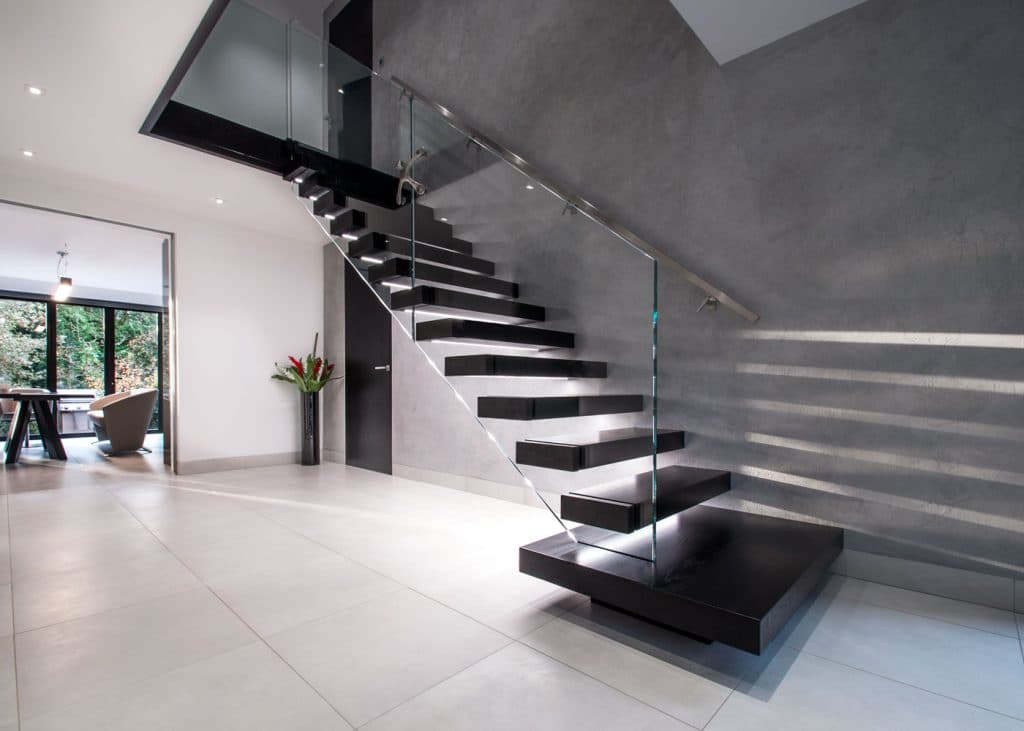Open-concept homes are designed to maximize space and create a free-flowing atmosphere. In these modern, spacious homes, every design element plays a crucial role in enhancing the sense of openness. One feature that perfectly complements an open-concept layout is the floating staircase. These staircases not only offer aesthetic appeal but also contribute to the overall functionality and feel of the space.
In this article, we’ll explore the multiple reasons why floating stairs are a perfect fit for open-concept homes, from their design advantages to the way they enhance both beauty and functionality. If you’re planning to build or remodel your home, floating stairs could be the key feature that elevates the entire design.
What Are Floating Stairs?
Floating stairs are unique in that they appear to “float” without any visible support structure. Unlike traditional staircases, which are often built with solid risers and support beams, floating staircases are designed with open treads that seem to hover in mid-air. The supporting structure is usually hidden, giving the stairs their signature sleek and minimalist look.
This modern staircase design is often made with materials like wood, glass, or metal, offering customization options that can align with any interior design style. From the moment you step into a space with floating stairs, it becomes clear that they’re not just a functional feature—they’re a bold design statement.
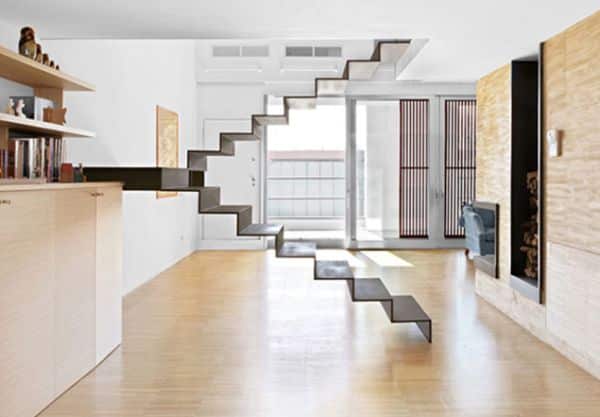
1. Maximizing Visual Space
In an open-concept home, one of the main goals is to create a sense of spaciousness and freedom. Floating stairs help achieve this by eliminating bulky structures that might otherwise obstruct sightlines and disrupt the openness of a room. Unlike traditional staircases, which can often feel like they close off a portion of the space, floating stairs allow light and air to flow freely between floors, enhancing the overall sense of openness.
This transparent effect creates a visually uninterrupted path across the floor plan. The design of floating stairs ensures that nothing interrupts the flow, whether it’s the view from the living room to the kitchen or from one level to another. This makes floating stairs the ideal solution for homeowners who want to preserve the open, airy feel of an open-concept space.
2. Aesthetic Appeal and Modern Design
Floating staircases are an essential design element in modern interiors, particularly in open-concept homes that embrace minimalist and sleek design principles. These staircases can be customized to match the aesthetic of any home, whether you’re going for an ultra-modern, industrial look or a more traditional, natural style.
The beauty of floating stairs lies in their simplicity. Materials like glass, steel, and wood give you the flexibility to choose finishes that seamlessly integrate with the rest of your interior design. For example, a metal and glass combination can create a contemporary, industrial look, while wooden treads can add a touch of warmth and texture to an otherwise minimalist space.
Floating stairs are a versatile design feature that can serve as the centerpiece of a room or blend into the surrounding decor. Their minimalist nature means they won’t overpower the space, but rather enhance the room’s aesthetic appeal.
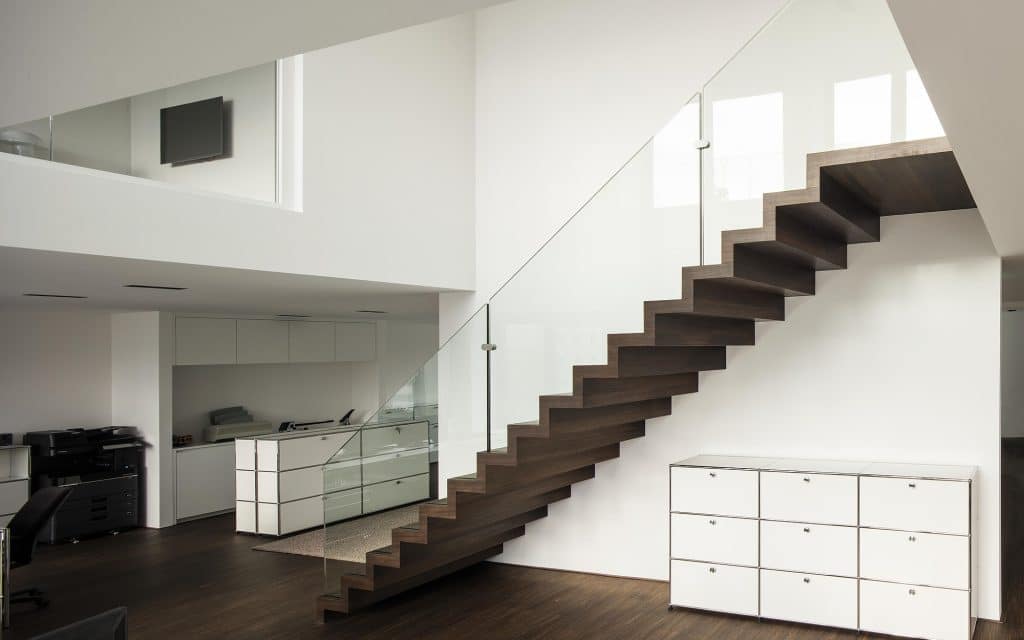
3. Creating an Open, Flowing Atmosphere
An open-concept home is all about creating a seamless flow between different areas of the house. Traditional staircases with solid walls or bulky structures can create divisions that break up this flow. Floating stairs, on the other hand, maintain the open and continuous feel of a space by allowing for uninterrupted sightlines from one room to the next.
By removing the heavy presence of a traditional staircase, floating stairs help create a fluid transition between floors and across the entire home. Whether you’re moving from the kitchen to the living room or from one floor to the next, the open nature of the floating stairs allows for a smooth and visually cohesive experience.
Floating stairs don’t just improve the visual flow—they also enhance the physical movement between spaces. With fewer barriers, the overall feel of the home becomes more connected and less segmented.
4. Maximizing Light and Airiness
Natural light is an essential component of open-concept home design. The more light you can bring into a space, the more airy and welcoming it feels. Floating stairs, with their open treads and minimal structure, allow light to pass freely between floors, increasing the amount of natural light that enters each level of your home.
In addition to maximizing natural light, the transparency of floating stairs helps to open up a room. The lack of solid structures means there’s no visual barrier to the flow of light, which can make even the smallest spaces feel larger and brighter. This open, light-filled environment is perfect for homeowners who value the connection between interior design and natural elements.
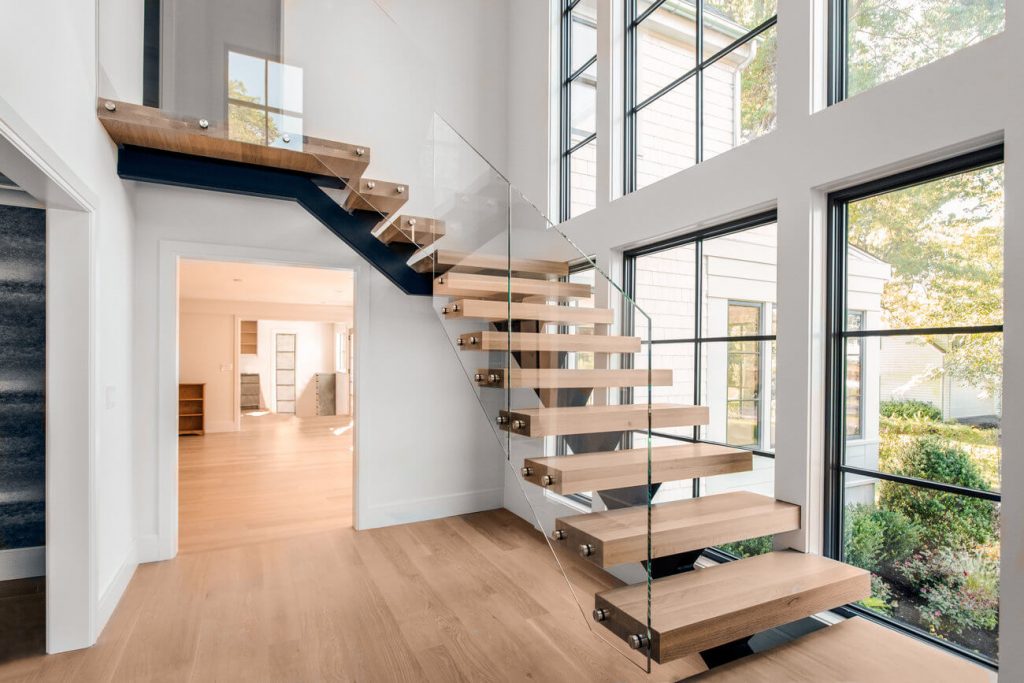
5. Customization to Suit Your Space
One of the most appealing aspects of floating stairs is their versatility. Unlike traditional staircases, which often come in standard designs, floating stairs can be fully customized to meet the needs of your space and personal aesthetic preferences. Whether you’re looking for a staircase that blends seamlessly into the background or one that becomes a bold focal point of the room, floating stairs offer endless possibilities.
You can choose from a variety of materials, including wood, metal, glass, and combinations thereof. You can also adjust the step design, the shape of the staircase (straight, curved, or spiral), and even the railing design. This level of customization ensures that your floating staircase will fit perfectly with the rest of your home’s design.
The flexibility of floating stairs means that no two staircases have to be alike. They can be tailored to suit the exact dimensions and style of your home, making them a truly bespoke feature.
6. Easy to Maintain
Floating stairs are not just a design marvel; they’re also incredibly easy to maintain. Traditional staircases with closed risers and bulky handrails can accumulate dust and dirt in hard-to-reach spaces, requiring frequent cleaning. Floating stairs, however, are designed with open treads that allow you to clean the space beneath them easily.
In addition to their easy-to-clean design, the materials used in floating stairs are often durable and long-lasting. Steel, glass, and wood are resistant to wear and tear, making them an ideal choice for homeowners who want a staircase that will look great for years with minimal maintenance.
7. Safety Features
Although floating stairs are known for their aesthetic appeal, they are also designed with safety in mind. Modern engineering ensures that floating stairs are structurally sound and can safely support the weight of individuals using them. Custom safety features like railings and non-slip surfaces can be incorporated into the design to meet the needs of every household.
Whether you’re installing floating stairs in a home with children or a high-traffic commercial space, safety remains a top priority. Custom glass or metal railings not only enhance the aesthetic of the staircase but also add an extra layer of security, ensuring peace of mind for the entire family.
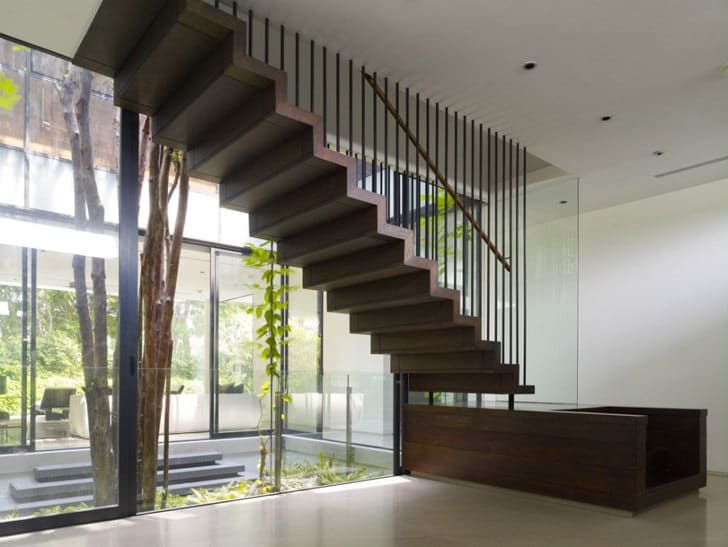
Conclusion
Floating stairs are the perfect addition to open-concept homes, offering unmatched visual appeal, functionality, and design flexibility. These staircases enhance the overall aesthetic of your home, maximize light and space, and provide a modern, clean look that suits a wide range of interior styles. With customization options available, floating stairs can be tailored to meet the unique needs of your home, making them a standout feature in any open-plan design.
If you’re ready to transform your open-concept home with a custom floating staircase, contact Apex Metalwork for expert design, fabrication, and installation. Our team specializes in creating high-quality, tailored floating staircases that will elevate your home’s aesthetic and functionality.

